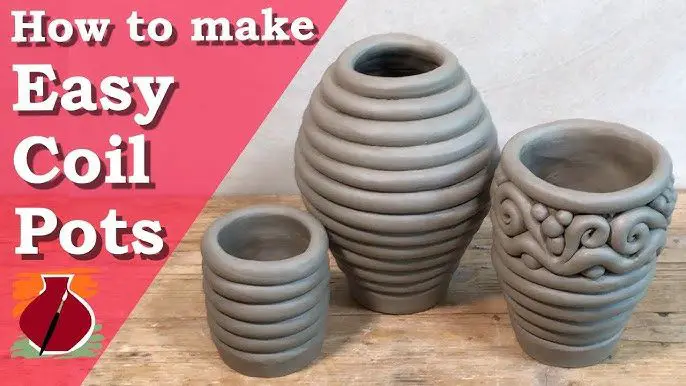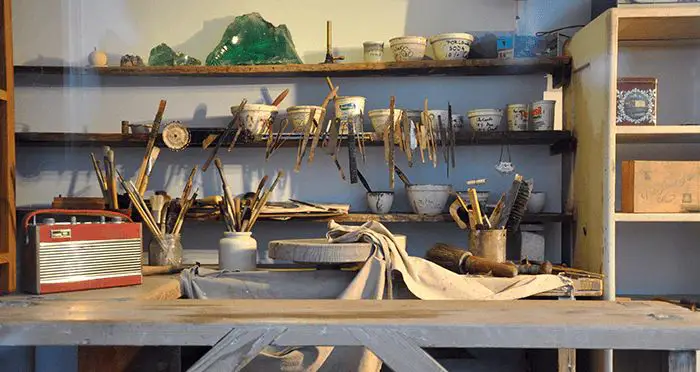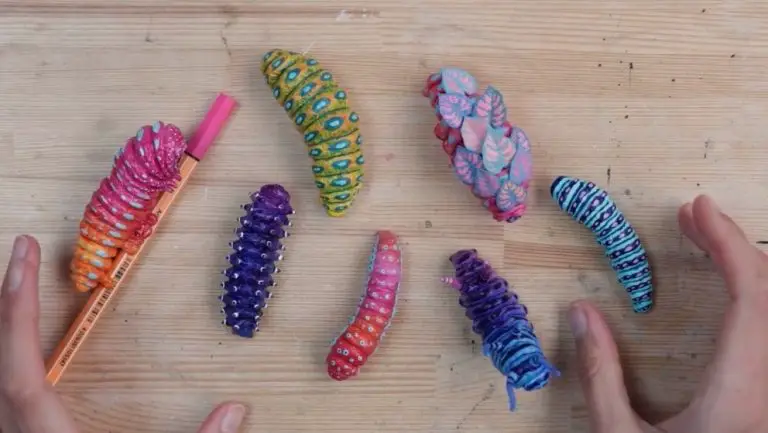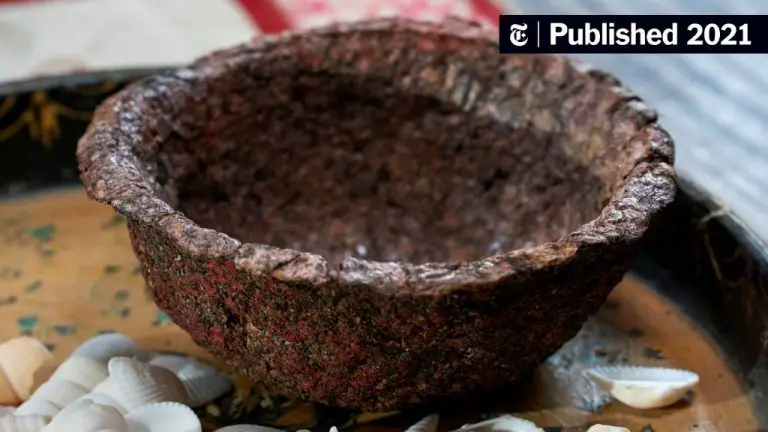What Is The Difference Between Hand Built And Wheel Thrown Pottery?
Hand built pottery refers to clay pieces that are shaped by hand without the use of a potter’s wheel. This includes techniques like pinch pots, coil building, and slab construction. Wheel thrown pottery is clay that has been shaped on a spinning potter’s wheel. The centrifugal force of the spinning wheel allows the clay to be pulled up into taller cylindrical forms. While hand built pieces showcase the hand of the artist, wheel thrown pottery allows for more uniformity and precision in shapes.
History
The origins of handbuilding techniques can be traced back over 25,000 years to some of the earliest pottery vessels ever made. Early potters shaped clay into functional vessels and figures without the use of a wheel. Coiling, pinching, and slab construction are some of the oldest and most widespread handbuilding techniques still used today (Wikipedia, 2023).
The potter’s wheel was invented during the Neolithic period around 3500 BCE in ancient Mesopotamia, modern day Iraq. The earliest surviving examples of wheel-thrown pottery are from Mesopotamia and date back over 5000 years. The innovation of the potter’s wheel enabled potters to create symmetrical vessels and new shapes much more efficiently (University of Colorado Boulder, 2018).
Process
Hand building pottery involves sculpting clay by hand without the use of a pottery wheel. It is an intricate, multi-step process that allows the artist to work slowly and methodically to create one-of-a-kind pieces.
The general process for hand building pottery includes:
- Kneading and wedging the clay – Kneading helps remove air bubbles, while wedging aligns the clay particles to create an even, workable texture.
- Forming the basic shape – Pinching, coiling, slabbing, and modeling are handbuilding techniques used to form the initial shape.
- Refinement and detailing – The artist uses various tools to refine shapes, create patterns, texture surfaces, and add decorative elements.
- Drying – The piece is left to air dry slowly to prevent cracking. For large pieces, the drying process may take days or weeks.
- Firing – The dried clay is fired in a kiln to permanently harden it through sintering.
- Glazing (optional) – Colored glazes may be applied before a second firing to add color and finish.
Hand building allows for great creativity and control during the gradual, meticulous process. The artist can take time shaping the clay, creating decorative textures, and bringing their vision to life (source).
Process
Wheel throwing involves several steps to create pottery pieces. First, an appropriate amount of clay is centered on the pottery wheel https://traditionalmastercraftuk.co.uk/articles/quality-wheel-thrown-pottery-tools-revival. The wheel is then started to spin the clay. Using wet hands, the potter applies pressure to the spinning clay to shape it into the desired form. The walls of the piece are shaped by squeezing the clay between the thumb and fingers. A pottery tool called a rib can help smooth the exterior surface. Additional clay can be added and shaped as needed. Once the basic shape is formed, refinements are made by making the walls thinner and smoothing the surfaces. Trimming excess clay on the bottom creates the base. The wet pottery piece is then carefully removed from the wheel and set aside to dry before firing in a kiln.
Differences in Process
The main differences between hand built and wheel thrown pottery are in the techniques used to shape the clay. Hand building involves shaping the clay by hand using techniques like pinching, coiling, slab construction, or modeling. This process allows the potter to work at their own pace and create unique asymmetrical or sculptural forms. Wheel throwing involves centering a lump of clay on a spinning pottery wheel and using hands and tools to shape it into a symmetrical form as it rotates. This process requires skill in centering the clay and coordination in shaping it quickly before it dries.
While hand building provides more creative freedom, wheel throwing allows for greater consistency and production of uniform pieces. Hand built items like coiled pots often have rougher, more organic finishes while wheel thrown pieces usually have smoother, more refined surfaces. Simple forms like bowls, vases, and cylinders are faster to make on the wheel while complex shapes are easier to construct by hand. In general, hand building is considered more accessible for beginners, while throwing on the wheel requires substantial skill development and practice.
Source: https://www.donorschoose.org/classroom/8358908
Types of Pieces
Certain types of ceramic pieces lend themselves better to either hand building or wheel throwing. In general, hand building is good for making sculptural pieces, decorative items like tiles or plates, and larger or more intricate vessels that would be difficult to throw on the wheel.
Wheel throwing excels at creating symmetrical pottery with thinner walls and elegant curved shapes, like bowls, mugs, and vases. The circular momentum of the wheel allows potters to shape fluid, uniform forms.
According to Pottery Crafters, hand building has the advantage for making items with very narrow openings, like a bottle neck, that would be hard to throw and then attach a narrow top. Hand building also works better for making square, rectangular, or faceted pieces since the wheel naturally lends itself to round shapes.
In summary, hand building gives potters more freedom and control for sculpting creative asymmetrical or architectural pieces. Wheel throwing enables throwing elegant symmetrical vessels with thinner walls and flowing curves.
Textures and Patterns
Hand building allows for a wide variety of textures and patterns that can’t be achieved on the pottery wheel. The direct contact between the clay and the potter’s hands enables intricate details and impressions to be made. Some common textures created through hand building include:
- Smooth, burnished finishes
- Rough, sandy textures
- Indentations from fingers, tools, or household objects
- Pinch marks
- Coil ridges
- Geometric patterns
- Repetitive designs like waves or lines
- imprints of leaves, ferns, lace, burlap, etc.

Hand builders have complete control over the look and feel of the clay. Pieces can be burnished to a sheen or left with a raw, earthy appearance. The textures possible are limitless based on the potter’s desired effect. Items like rubber stamps, textured rolling pins, leaves, seashells, and mesh can all be used to impression designs (Source). Glazes tend to highlight and accentuate the diverse textures achievable through hand building.
Textures and Patterns
Wheel thrown pottery allows for a wide variety of textures and patterns to be achieved. The centrifugal force of the spinning wheel head can be used to stretch and distort the clay to create interesting effects. Ceramic artists will often try to enhance the natural textures of the clay by using different tools and techniques while throwing on the wheel.
Some common textures created through wheel throwing include ribbing, paddling, faceting, and pie crust rims. Ribbing involves using a rounded rib tool to create long vertical lines. Paddling uses a flat paddle tool to imprint geometric shapes into the surface. Faceting is done by compressing the clay with an angled tool to create sharp ridges. Pie crust rims make decorative patterns along the lip of a piece.
In addition to using various tools, the speed of the wheel and the timing of interventions allow for great variety. More ornate patterns like honeycomb and orange peel textures take skill and practice to master on the wheel. Overall the centrifugal force and fluid nature of working on a spinning wheel head enables textural possibilities not as easily achieved in handbuilding.
Citing:
https://www.pinterest.com/doucette1488/wheel-thrown-pottery-ideas/
Level of Skill
The learning curve and required skill level differs quite a bit between hand building and wheel throwing. Hand building tends to be easier for beginners to pick up, as you are working with the clay directly in your hands rather than relying on the momentum of a spinning wheel.
Wheel throwing requires more coordination and practice to center the clay on the wheel and pull up smooth cylinder shapes. Throwing takes a lot of repetition to control the spinning clay with your hands and tools (Source). Many beginners find hand building less intimidating and more instantly gratifying.
However, wheel throwing allows more versatility and refinement in shapes and curvature. Once the initial learning curve is mastered, throwing opens up many possibilities that are difficult to achieve with hand building alone. An experienced potter can throw very thin, symmetrical pieces with a refinement unachievable solely by hand.(Source)
Overall, hand building tends to be easier to start, but wheel throwing offers more versatility for intermediate and advanced ceramic artists. Most potters utilize both techniques, starting with hand building and slowly building wheel throwing skills over time.
Conclusion
In summary, the main differences between hand built and wheel thrown pottery are in the process, textures, skill level required, and types of pieces that can be created.
Hand building involves more direct sculpting and shaping of the clay by hand, allowing for more organic shapes, textures, and asymmetric forms. It requires less equipment, is beginner-friendly, and allows more freedom and creativity in design. However, pieces may be less uniform andrequire more finishing work.
Wheel throwing uses the pottery wheel to centrally shape the clay into more uniform, symmetrical forms. It requires specific equipment, training, and practice to master the techniques. While wheel work can efficiently produce more refined pieces, the process is more restrictive and requires following the limitations of the wheel.
In the end, hand building and wheel throwing offer complimentary strengths and together make up the toolset of any well-rounded potter. Most potters utilize both approaches to capitalize on the unique advantages of each in creating their work.




